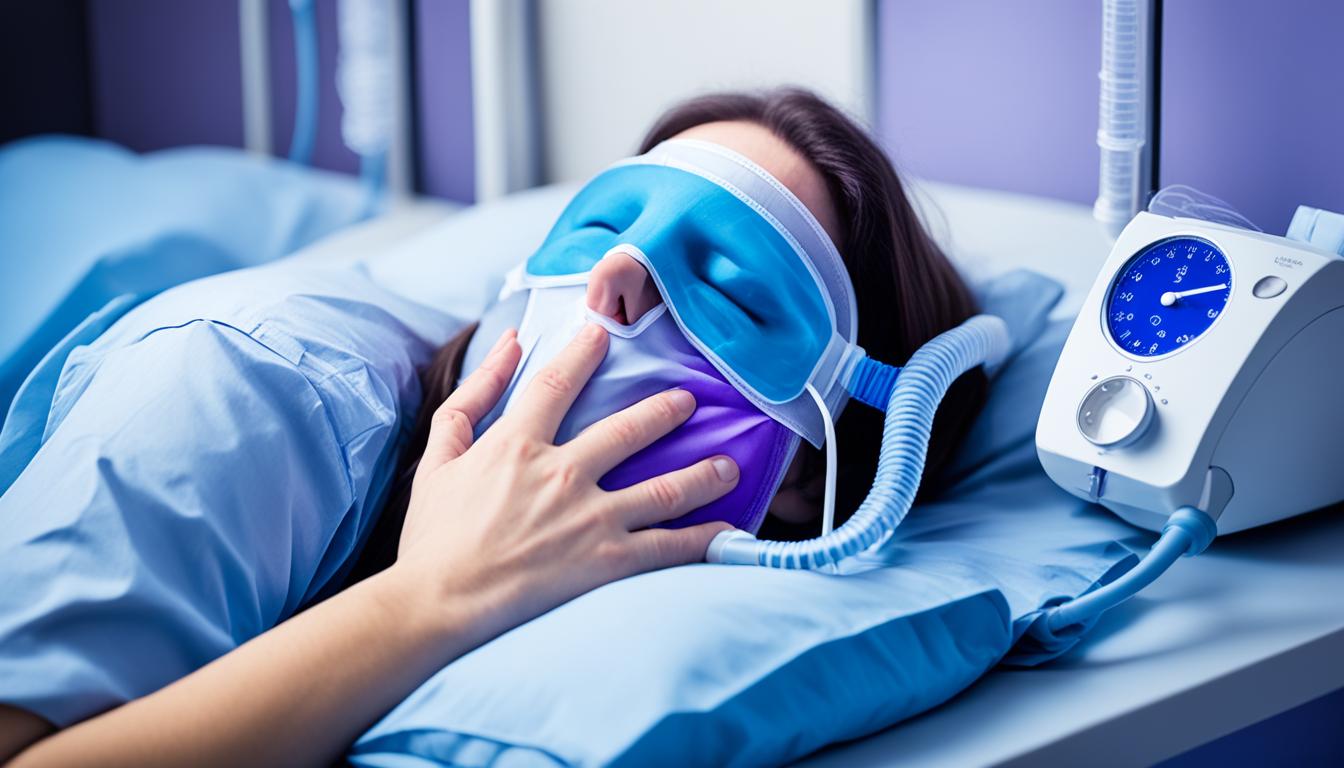Sleep apnea is a common sleep disorder. It’s marked by pauses in breathing while asleep. If not dealt with, it can cause serious health issues. This article covers sleep apnea’s symptoms, causes, how it’s diagnosed, and possible treatments like stem cell therapy.
There are two main types: obstructive sleep apnea (OSA) and central sleep apnea (CSA). OSA happens when throat muscles relax and block the airway. CSA results from a communication problem between the brain and breathing muscles.
Signs of sleep apnea are snoring, morning headaches, feeling very sleepy during the day, and dry mouth in the morning. It’s important to get a medical diagnosis if you notice these signs. A home sleep test or a polysomnogram can help figure out the type and severity of your sleep apnea. This enables doctors to plan the best treatment for you.
Several things can cause sleep apnea. For OSA, the risks are age, being overweight, being male, and certain facial structures. CSA is often linked to health issues like heart failure or stroke. It’s key to spot and deal with these risks to manage sleep apnea and avoid more problems.
Treatments include shedding weight and stopping smoking to reduce symptoms. Another approach is CPAP therapy. It uses a mask to push air into your airways during sleep. Stem cell therapy is an option for severe cases. It aims to repair tissues and improve sleep apnea symptoms.
Key Takeaways:
- Sleep apnea is a sleep disorder characterized by repeated breathing interruptions during sleep.
- The two main types of sleep apnea are obstructive sleep apnea (OSA) and central sleep apnea (CSA).
- Common symptoms include snoring, morning headaches, feeling very sleepy during the day, and dry mouth.
- Getting a proper diagnosis through home sleep tests or polysomnograms is crucial for personalized treatment plans.
- Lifestyle changes, CPAP therapy, and stem cell therapy can be effective treatment options for sleep apnea.
Causes and Risk Factors of Sleep Apnea
Sleep apnea is a tricky sleep issue with many causes and risks. It comes in two main types: obstructive sleep apnea (OSA) and central sleep apnea (CSA). Each type has its own reasons.
Obstructive Sleep Apnea (OSA)
Many things can make OSA more likely. These factors can make the airway narrow or close while sleeping. Some of these include:
- Age: It’s more common in people over 40.
- Gender: Men tend to have OSA more than women.
- Obesity: Being overweight can mean more fat around your throat, blocking the airway.
- Anatomical Features: Certain body shapes, like a small jaw, large tongue, or a bent septum, can lead to an airway blockage.
Central Sleep Apnea (CSA)
CSA is different from OSA. It links to health issues that affect the brain’s breathing control. Heart failure and strokes are main causes of CSA.
- Heart Failure: Problems with the heart can mess with the way your brain controls breathing, causing CSA.
- Stroke: When a stroke damages the brainstem, it affects how the brain regulates breathing, leading to CSA.
Other Risk Factors
Sleep apnea can also be caused by more general risks. These include:
- Being overweight or obese: Extra weight makes airway blockage more likely.
- Family history: Sleep apnea can run in families, suggesting it might have genetic roots.
- Smoking: Smoking irritates the airways and can disrupt breathing during sleep.
- Small upper airway: A naturally narrow airway can make sleeping and breathing harder.
Finding and dealing with these causes and risks is important in fighting sleep apnea. Knowing the reasons helps doctors make plans to treat it. This can help people sleep better and feel healthier overall.
Diagnosis and Treatment of Sleep Apnea
Sleep apnea is a common sleep disorder. It can be found through a home test or a polysomnogram. These tools measure stuff like your breathing while you sleep. This helps figure out if you have sleep apnea and how bad it is.
If you’re diagnosed with sleep apnea, lifestyle changes can make a big difference. Things like losing weight or stopping smoking can help a lot. They improve your symptoms and lower the chance of problems from sleep apnea.
Another treatment is to use a CPAP machine. This machine helps keep your airway open when you sleep. It involves wearing a mask that blows air into your nose or mouth gently. This makes sure you breathe in a smooth way through the night.
For really bad cases, other treatments like stem cell therapy might be an option. Stem cell therapy could help with sleep apnea symptoms. It might help heal your body. But, this treatment is still being studied. Before deciding on a treatment, always talk with your doctor. They can help you find what’s best for you.

